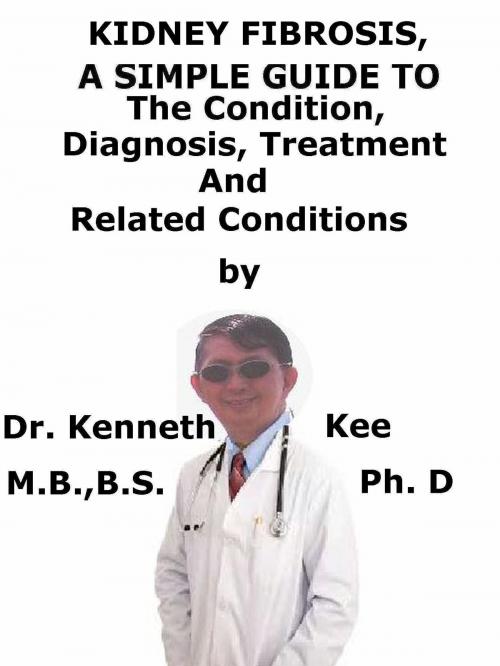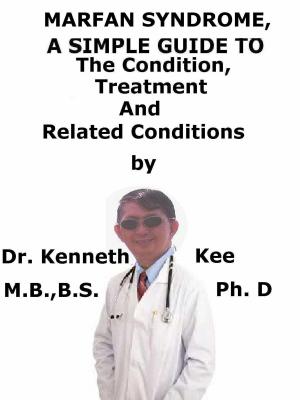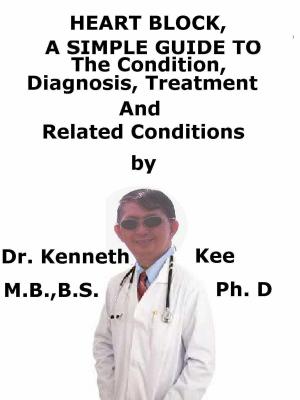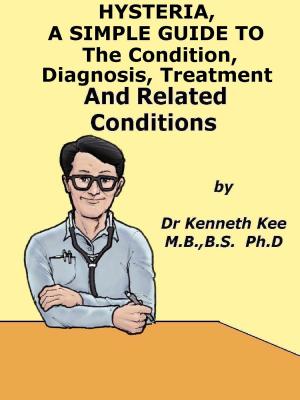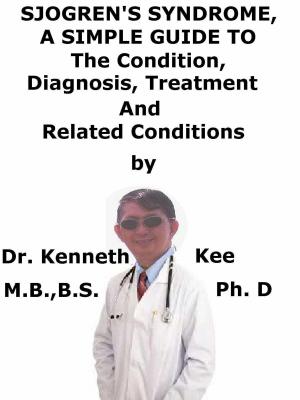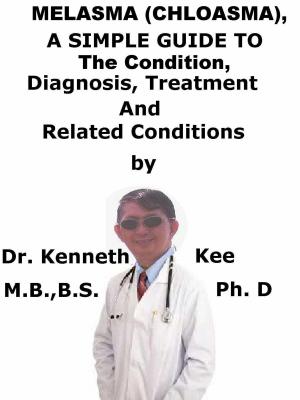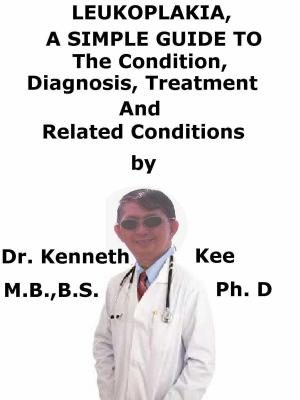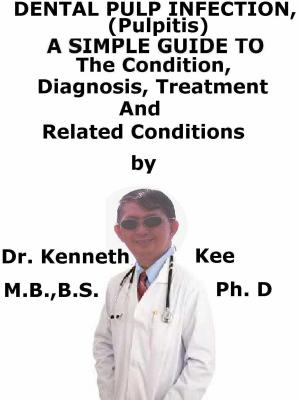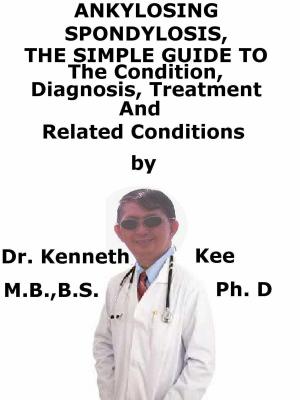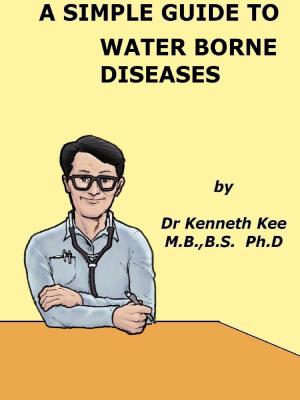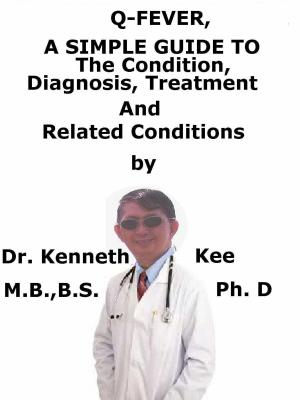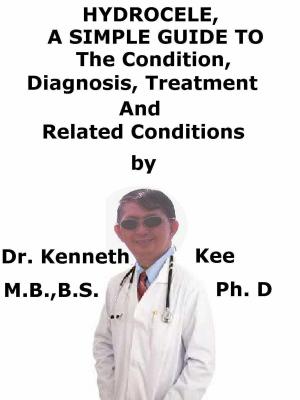Kidney Fibrosis, A Simple Guide To The Condition, Diagnosis, Treatment And Related Conditions
Nonfiction, Health & Well Being, Medical, Specialties, Internal Medicine, Nephrology| Author: | Kenneth Kee | ISBN: | 9781370253104 |
| Publisher: | Kenneth Kee | Publication: | February 14, 2018 |
| Imprint: | Smashwords Edition | Language: | English |
| Author: | Kenneth Kee |
| ISBN: | 9781370253104 |
| Publisher: | Kenneth Kee |
| Publication: | February 14, 2018 |
| Imprint: | Smashwords Edition |
| Language: | English |
This book describes Kidney Fibrosis, Diagnosis and Treatment and Related Diseases
This is my 4th book on Fibrosis which as can be is a very destructive disease ending in organ failure or death or needing organ transplant.
Like all organs, the kidney is very prone to fibrosis resulting in kidney failure.
The disease fibrosis is the formation of fibrous connective tissue as a repairing response to injury or injury.
Fibrosis may refer to the connective tissue deposition that occurs as part of normal healing or to the excess tissue deposition that occurs as a pathological process.
When fibrosis occurs in reaction to damage, the word “scarring” is used.
The scarring of an organ can cause loss of function of the organ and result in death.
Kidney fibrosis is a direct after effect of the kidney's limited capacity to regenerate after injury.
Fibrosis of the kidney, either as a primary pathological process or the final presentation of organ involution and loss, can involve all of these functions
Renal fibrosis leads to a progressive loss of renal function, eventually leading to end-stage renal failure and a need for dialysis or kidney transplantation.
While it presents itself histologically as a rise in extra-cellular matrix, the histological appearance can be caused by a new synthesis of matrix (mainly collagen) or an abnormal loss of renal tissue.
In both cases the process is dependent on a resident mesenchymal cell, the so-called myofibroblast, and is not dependent of disease cause.
Possibly fibrosis can be treated, either indirectly by modifying the environment the kidney functions in, or more directly by interfering with stimulation and function of myofibroblasts.
Fibrosis being an excess accumulation of extra-cellular matrix (mainly composed of collagen) normally results in loss of function when normal tissue is replaced with scar tissue
Causes
Kidney disease consists of a diverse range of causes, such as immunological, mechanical, metabolic and toxic injuries among others.
These differently affect the three functional compartments of the kidney;
1.The vasculature,
2.Glomerulus and
3.Tubulointerstitium.
Symptoms
Symptoms that occur in the early stages of this disorder are:
1.Dull pain in the abdomen or back that may be hard to pinpoint
2.Pain on one side between the upper abdomen and back
Diagnosis
An accurate diagnosis requires the use of CT or MRI scans of the abdomen.
Additional tests used to confirm the diagnosis are:
1.Blood tests to measure kidney function, anemia, and inflammation
2.An X-ray of the kidneys and ureters, which is called an intravenous pyelogram
3.An ultrasound of the kidneys
4.A biopsy to check for cancer cells
Biopsy is presently the gold standard for assessing fibrosis with histological techniques
Treatment
The treatment differs depending on the seriousness and the site of the fibrosis.
If a patient is diagnosed in the early stages of the condition, the patient may be prescribed anti-inflammatory medications, corticosteroids, or immunosuppressants.
If a patient is diagnosed after fibrosis has blocked one or both of the ureters, the doctor will need to clear the obstruction.
The purposes of treatment are to remove the blockage, repair the affected ureter, and prevent it from happening again.
For many people, treatment needs both medication and internal intervention.
The method of limiting fibrosis through angiotensin II inhibition has been used medically
Pirfenidone (5-methyl-N-phenyl-2-(1H)-pyridone) is a small, non-peptide, orally available molecule that can prevent or even reverse excess matrix accumulation.
If medicines fail, the treatment will be kidney dialysis, followed by kidney transplant.
TABLE OF CONTENT
Introduction
Chapter 1 Kidney Fibrosis
Chapter 2 Causes
Chapter 3 Symptoms
Chapter 4 Diagnosis
Chapter 5 Treatment
Chapter 6 Prognosis
Chapter 7 Pulmonary Fibrosis
Chapter 8 Hepatic Fibrosis (Cirrhosis)
Epilogue
This book describes Kidney Fibrosis, Diagnosis and Treatment and Related Diseases
This is my 4th book on Fibrosis which as can be is a very destructive disease ending in organ failure or death or needing organ transplant.
Like all organs, the kidney is very prone to fibrosis resulting in kidney failure.
The disease fibrosis is the formation of fibrous connective tissue as a repairing response to injury or injury.
Fibrosis may refer to the connective tissue deposition that occurs as part of normal healing or to the excess tissue deposition that occurs as a pathological process.
When fibrosis occurs in reaction to damage, the word “scarring” is used.
The scarring of an organ can cause loss of function of the organ and result in death.
Kidney fibrosis is a direct after effect of the kidney's limited capacity to regenerate after injury.
Fibrosis of the kidney, either as a primary pathological process or the final presentation of organ involution and loss, can involve all of these functions
Renal fibrosis leads to a progressive loss of renal function, eventually leading to end-stage renal failure and a need for dialysis or kidney transplantation.
While it presents itself histologically as a rise in extra-cellular matrix, the histological appearance can be caused by a new synthesis of matrix (mainly collagen) or an abnormal loss of renal tissue.
In both cases the process is dependent on a resident mesenchymal cell, the so-called myofibroblast, and is not dependent of disease cause.
Possibly fibrosis can be treated, either indirectly by modifying the environment the kidney functions in, or more directly by interfering with stimulation and function of myofibroblasts.
Fibrosis being an excess accumulation of extra-cellular matrix (mainly composed of collagen) normally results in loss of function when normal tissue is replaced with scar tissue
Causes
Kidney disease consists of a diverse range of causes, such as immunological, mechanical, metabolic and toxic injuries among others.
These differently affect the three functional compartments of the kidney;
1.The vasculature,
2.Glomerulus and
3.Tubulointerstitium.
Symptoms
Symptoms that occur in the early stages of this disorder are:
1.Dull pain in the abdomen or back that may be hard to pinpoint
2.Pain on one side between the upper abdomen and back
Diagnosis
An accurate diagnosis requires the use of CT or MRI scans of the abdomen.
Additional tests used to confirm the diagnosis are:
1.Blood tests to measure kidney function, anemia, and inflammation
2.An X-ray of the kidneys and ureters, which is called an intravenous pyelogram
3.An ultrasound of the kidneys
4.A biopsy to check for cancer cells
Biopsy is presently the gold standard for assessing fibrosis with histological techniques
Treatment
The treatment differs depending on the seriousness and the site of the fibrosis.
If a patient is diagnosed in the early stages of the condition, the patient may be prescribed anti-inflammatory medications, corticosteroids, or immunosuppressants.
If a patient is diagnosed after fibrosis has blocked one or both of the ureters, the doctor will need to clear the obstruction.
The purposes of treatment are to remove the blockage, repair the affected ureter, and prevent it from happening again.
For many people, treatment needs both medication and internal intervention.
The method of limiting fibrosis through angiotensin II inhibition has been used medically
Pirfenidone (5-methyl-N-phenyl-2-(1H)-pyridone) is a small, non-peptide, orally available molecule that can prevent or even reverse excess matrix accumulation.
If medicines fail, the treatment will be kidney dialysis, followed by kidney transplant.
TABLE OF CONTENT
Introduction
Chapter 1 Kidney Fibrosis
Chapter 2 Causes
Chapter 3 Symptoms
Chapter 4 Diagnosis
Chapter 5 Treatment
Chapter 6 Prognosis
Chapter 7 Pulmonary Fibrosis
Chapter 8 Hepatic Fibrosis (Cirrhosis)
Epilogue
